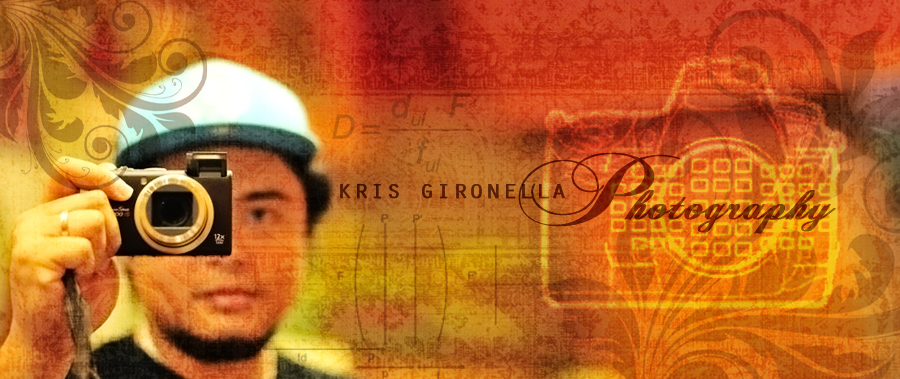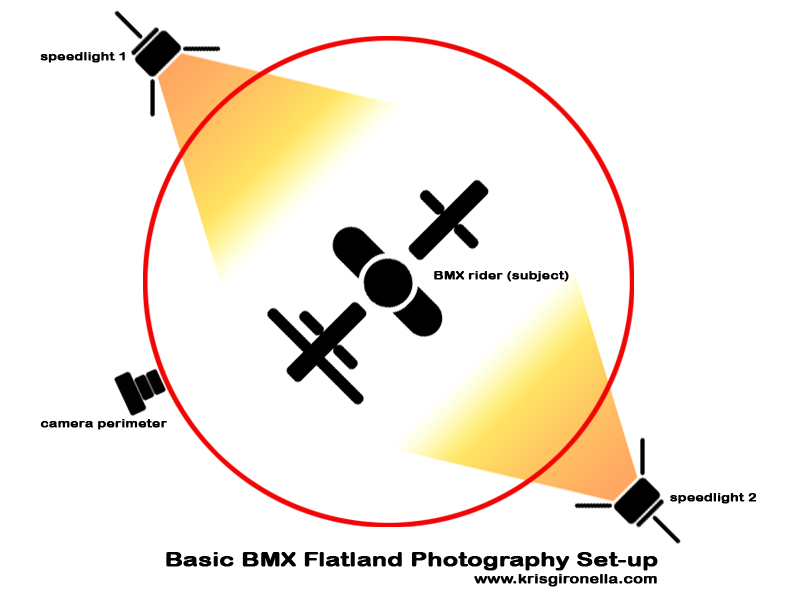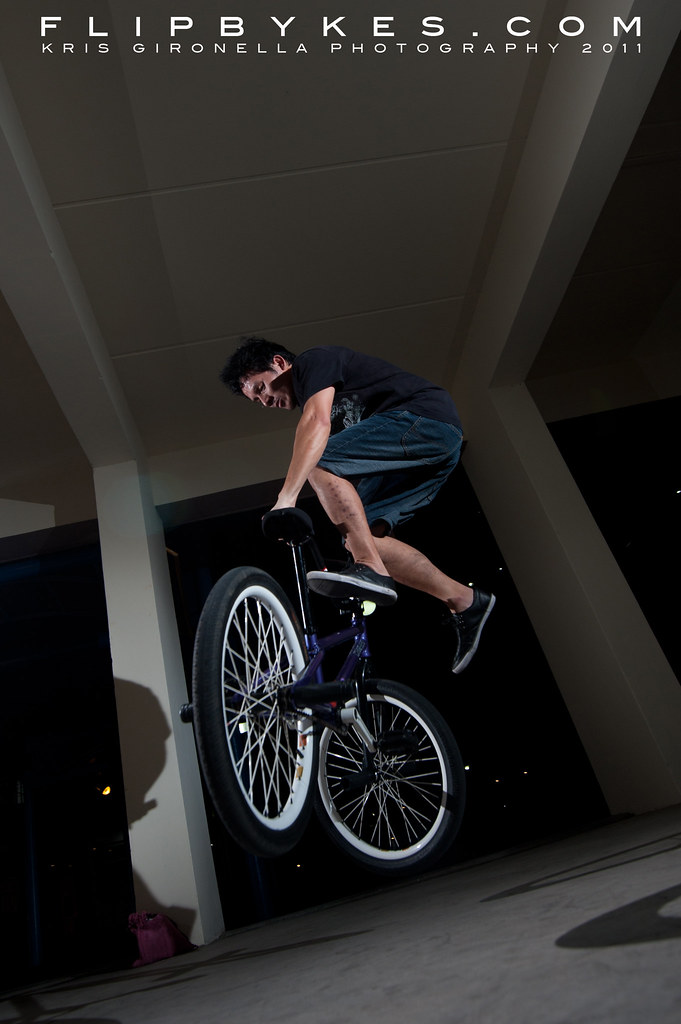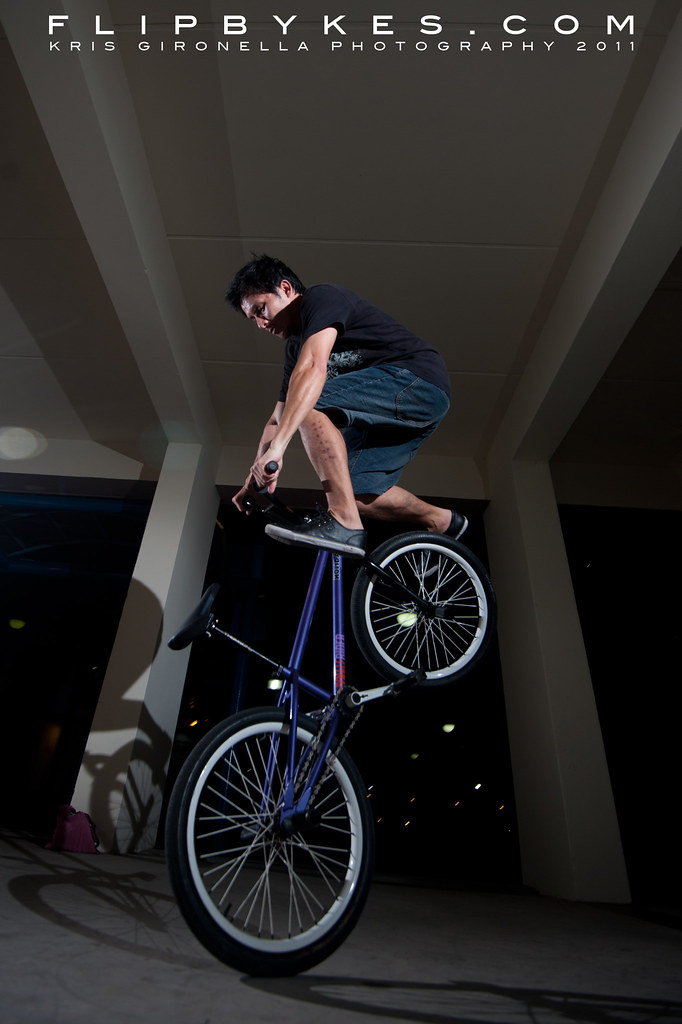The Set-Up
I use a basic lighting set-up - 2 speedlights a Nikon SB-900 and Nikon SB-600 and a light stand for each. On my sample photos the the speedlight where place face-to-face with a distance of almost 4-6 meters away from each other. The center will be the subject's playground. You might wanna move around the subject to get the right angle of shot. See the diagram below.
Speedlight setting may vary depending on the situation but in my case I used manual mode 1/16 power on both flash, shutter speed 1/250 (max sync), lens used Nikon 16-35mm F4G VR II @ 16mm F4. Both speedlights were triggered by Phottix Strato 4-in-1. This strobing style was used by Yasuyuki when he visited Singapore for a promo shoot with York Uno (Ares Bykes Japan). I was new in photography on that time. I still use this technique on most of my flatland shots but the speedlight and camera settings were based my own liking and not based on a fix setting use buy a particular photographer.
The Photos
Timing is crucial on BMX photography, I guess on almost any kind of photography but here it's the main key. Getting the right angle and facial expression will make it more dynamic. Try different approach on your shots. My favorite is the worm's eye view - although this is a bit tricky 'coz your not looking on the view finder and basically you're just guessing if your faming is correct or not. Eventually you'll get the hang of it.
"Hitch-Hiker"
"Bunny Hop - Tail Whip"
"Decade"
"Crack Packer"
Final Words
This kind of BMX flatland photography is only applicable on controlled situations. If you're on an actual BMX competition it's better not to use strobes, better if you shoot discreetly without flash for it may affect the performance of the rider. If you really want to shoot a rider you should ask permission first, you don't just shoot someone in the face while doing warm-ups or routines 'coz it's very irritating and rude. Riders worked hard in perfecting their tricks it's better to give them credit every time you're publishing their photo(s). Most of them rides for a living so treat them as you treat a model with shooting and publishing rights. Some of them will just go for it for fun but some are not really comfortable with it so do your homework first might as well know a little background on the rider what company he is riding for and the purpose of the shoot.
Notes: To view the whole set visit my flickr photostream. Thanks to Charleston and Ordep for performing few tricks on this BMX flatland session. Happy viewing. Cheers!






Thanks so much for this! I havent been this thrilled by a post for a long time! You’ve got it, You are definitely somebody that has something to say that people should hear. Keep up the wonderful work. Keep on inspiring the people!
ReplyDeleteThesis Writing